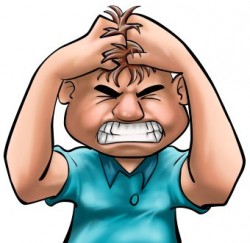Signs and Symptoms of Alcohol Use and Abuse
Alcohol has all but taken on an “untouchable” persona in terms of its continued widespread acceptance across the generations. In spite of alcohol’s much publicized harmful effects, the beverage continues on as a mainstay within most every aspect of American life.
Not surprisingly, alcohol use and abuse behaviors can go unnoticed for a good while before those closest to the drinker take notice. According to the Florida Institute of Technology, a mere one out of every 36 problem drinkers actually seeks out needed treatment help.
As alcohol’s effects impair the body and the mind, both physical and behavioral signs of alcohol use and abuse become apparent over time. In effect, signs and symptoms of alcohol use and abuse tend to be easier to spot the longer a person continues to drink.
Understanding how alcohol use and abuse affects the body and mind can help in spotting signs and symptoms early on and hopefully help a person get the help he or she needs. Considering alcohol’s damaging effects over time, the sooner needed treatment help is sought the better.
Alcohol Abuse vs. Alcohol Dependence
When used in moderation, alcohol poses little risk of addiction, though other factors tend to be at work in cases where a person abuses alcohol on a frequent basis. Someone capable of using alcohol in moderation has maintained a certain degree of control of his or her drinking behaviors, whereas a total loss of control most characterizes addiction.
Alcohol’s effects begin in the brain, an area that must maintain an ongoing chemical balance in order to function normally. Alcohol’s ability to alter brain neurotransmitter outputs accounts for much of the problems encountered with alcohol use and abuse.
As with any other addictive substance, alcohol has a cumulative effect on brain and body functions, so someone who drinks on a frequent basis will likely experience different degrees of dysfunction over time, according to American Psychiatric Publishing. With ongoing abuse, physical dependency and eventual psychological dependency drive alcohol use and abuse behaviors to the extreme.
In effect, alcohol abuse doesn’t necessarily lead to alcohol dependence, though alcohol dependence does stem from ongoing alcohol abuse behaviors. Being able to identity signs and symptoms of alcohol use and abuse before you or someone you know crosses the cutoff point may make all the difference in the world.
Physical Symptoms of Alcohol Use and Abuse
Alcohol’s primary effects work to depress or slow down brain and central nervous system processes. Over time, this slowing effect takes a toll on the brain’s ability to regulate bodily processes. Before long, different areas of the body start to reflect the overall state of dysfunction taking place in the brain.

A common sign of alcohol abuse is agitation.
Physical symptoms of alcohol use and abuse will likely develop early on as alcohol wears away at brain cell functions and disrupts the brain’s chemical balance. While each person’s overall health status does factor into alcohol’s harmful effects, signs and symptoms typically take the form of –
- Agitation – Alcohol disrupts nerve signal transmission processes throughout the central nervous system. As brain chemical imbalances worsen, these processes start to break down, causing an overall feeling of agitation and jumpiness.
- Digestive Problems – Alcohol interacts with cell receptor sites along the gastrointestinal tract in much the same way as it does in the brain and central nervous system. Consequently, it has damaging effects on the chemical processes that regulate digestion. Over time, a person will experience digestive problems to the point where the body becomes unable to extract nutrients from food. Health problems occur with greater regularity as the body’s overall defenses weaken.
- Loss of Control – As the brain becomes more dependent on alcohol’s effects, a person’s tolerance levels continue to rise as brain cell structures deteriorate. Drinkers must, in turn, consume increasingly larger amounts to compensate for rising tolerance levels. After a certain point, a person can no longer control alcohol use and abuse behaviors.
- Bingeing – Bingeing entails consuming unusually large amounts of alcohol at a time. People with a long history of alcohol use and abuse reach a point where bingeing becomes the only way to experience the desired “buzz” effect. People fairly new to drinking may also engage in bingeing behaviors in response to peer or social pressures. Doing so on a regular basis will likewise trigger a rapid increase in tolerance levels.
Behavioral Signs of Alcohol Use and Abuse
The physical effects of alcohol essentially set the stage for behavioral signs of alcohol use and abuse to take shape. Once brain chemical imbalances become the “norm,” alcohol’s effects start to “rewire” critical areas of the brain, such as the reward system, limbic system and cognitive centers.
These types of changes affect a person’s thinking patterns, emotional responses and motivations. Behavioral signs of alcohol use and abuse gradually revamp a person’s overall psychological make-up bringing on a host of negative consequences in the process.
Behavioral signs of alcohol use and abuse may include –
- Persistent Cravings – At this point, a person has come to believe he or she needs alcohol in order to cope with daily life. This belief system drives a constant craving for alcohol, which in turn works to shape a person’s daily motivations and priorities.
- Relationship Conflicts – Alcohol’s effects wreak havoc on a person’s emotional stability, eventually creating a roller coaster of up and down emotions. Maintaining close relationships and friendships becomes difficult, while persistent cravings work to shift a person’s priorities, time and attentions towards getting and consuming alcohol.
- Work/School Problems – Problems at work or school eventually start to happen on a more frequent basis as alcohol’s effects impair a person’s ability to function effectively.
- Money Problems – As a drinker’s priorities shift, monies normally slotted for essential bills, like rent and food goes to pay for alcohol instead.
Considerations
When left untreated, signs and symptoms of alcohol use and abuse can morph into serious physical and psychological disorders. People with long histories of alcohol abuse run the risk of developing a condition known as delirium tremors.
Delirium tremens is characterized by –
- Hallucinations
- Severe tremors
- Disorientation
- Unusually long periods of deep sleep
- Anxiety episodes
Once addiction sets in, it becomes even more difficult to recover from alcohol’s effect. Considering the long, hard road that is alcoholism, heeding early warning signs can be one of the best decisions a person ever makes.




